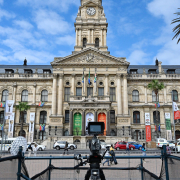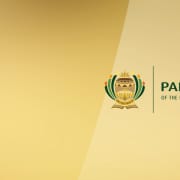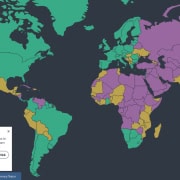|
Getting your Trinity Audio player ready...
|
By Phemelo Khaas
First published on Daily Maverick
I like millennials’ redefinition of the word “influencer” because it bestows authority and respect on those who have the power to influence. It converts influence into monetary value, which is especially important in this day and age, in a period where a litre of petrol threatens to hit R30.
Before this word was redefined, community radio was one of the leaders of the pack, not only reaching audiences in a language they understand, but also influencing their audience’s response. As such, community radio is an important ally in the work of civil society organisations.
I have worked as a media liaison officer for Corruption Watch (CW) for five years and community media has been a crucial part of our media and marketing strategy.
Through our fruitful collaborations with partners in this area, we have been able to further the vision and mission of the organisation.
Voice of the community
Community engagements are an integral part of our work as a civil society organisation (CSO). Such engagements are an important vehicle for community mobilisation, empowerment and education of communities about various issues on corruption. They also give communities a platform to express their concerns. In this way, CW serves as an authentic voice of the people in different spaces, influencing how the organisation advocates for change, approaches parliamentary submissions, or positions arguments in different conversations.
Like many CSOs, the pandemic impelled us to find alternative ways to reach organisational goals, one of which was community engagements.
These took the form of in-person gatherings like town hall or community forum meetings — but the pandemic limited our access to these constituencies. Because it was not a component we could lose as an organisation, we adopted an integrated communication strategy with an intense community broadcast media engagement and online marketing.
Through this strategy, Corruption Watch was able, in 2020, to record the second-highest number of reports of corruption received in a calendar year since its inception in 2012, with a total of 4 780 incidents of corruption reported. We also recorded spikes in corruption reports in provinces where we held community broadcast media engagements.
Investing in community media
Community media is invested in the growth and development of the communities in which they operate, since the same challenges that affect the community also affect community media platforms.
And as civil society organisations, we have a special responsibility to invest in community media because they engage with and advocate for the same people we claim to fight for through our various projects. Investment can take the form of supplying valuable content (informing, educating and mobilising) and funding (advertising and marketing).
Many of these platforms are, for various reasons, barely surviving. For one, communication professionals tend to overlook them, and when they do consider working with them, they do not see the value in paying a fair price for the work.
These platforms need to start thriving and, while civil society can and is playing a developmental role, several things need to change.
The community media sector desperately needs to be professionalised.
I have personally worked with marketing and sales personnel who could not write an invoice, while others lacked a sense of urgency in their work. We have also worked with broadcasters who did not do their own research or read the interview questions beforehand — as a result, those interviews fell flat. The worst was when slots already paid for took longer than agreed for interviews to occur.
However, those are just minor issues. The real reasons communication professionals avoid this sector are:
- Community media is hard to monitor and many monitoring companies don’t monitor them;
- Many cannot provide their accurate and current reach;
- The current rolling blackout schedule is a heavy burden for many stations, who are at the mercy of the electricity supply and cannot afford alternative power sources — this means they cannot broadcast when the power goes off; and
- If you are out of their area, it’s hard to listen to the content because online streaming is not always available.
These serious issues need urgent attention. Civil society can play a role here too, by sharing expertise and providing training.
Community inclusivity is crucial
Community audiences are by no means passive; on the contrary, they are highly engaged and influenced by the familiar radio voices. Furthermore, reaching an audience in their home or preferred language is a factor that should not be underestimated.
It’s important to recognise that civil society operating in South Africa cannot be driven only by English speakers. We have nine official languages and it is completely acceptable for a South African to not understand English.
Although civil society in general represents itself as a sector working for “the people”, many cannot communicate in vernacular languages and consequently do not even feature on the community media radar.
This is a missed chance to engage with communities on corruption, climate change, the distribution of government resources and much more. These topics affect us all and should not be reserved for higher LSM audiences.
By getting communities engaged in issues affecting them particularly, as well as democracy-related issues of national interest, we can bring them into the loop and ensure measures that support democracy and fight corruption are implemented all the way to community level.
We need to do better! We need to do more to bring communities into the conversation. Co-operation between all players — community media, civil society organisations, communication professionals, and communities themselves — will pay off handsomely for all involved.








